Today, we returned to Holland High School to continue instructing students about the mangrove food web. We took students outside to participate in a hands-on food web activity. Each student received a different mangrove organism that they were to represent. I instructed them to stand in a circle facing each other wearing their organism card around their head.
I asked students, “Where does energy from a food chain usually begin?”
The students responded, “The sun!”
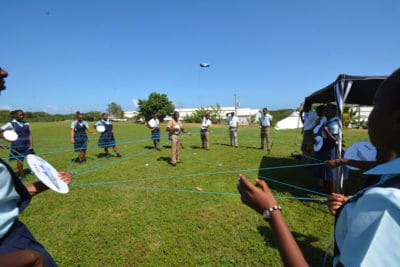
Students throwing a ball of yarn, which represents energy being passed along to the organism that eats it.
I asked the student that represented the sun to stand in the middle of the circle. Then I asked, “Which organisms receive energy from the sun? Please raise your hands.” Several students raised their hands.
I instructed, “Okay, so the sun is going to hold the end of the string in one hand and throw the ball of yarn with the other. Sun you may pass your energy along to one of the organisms that raised their hand.” The sun passed the ball of yarn (energy) to the seagrass.
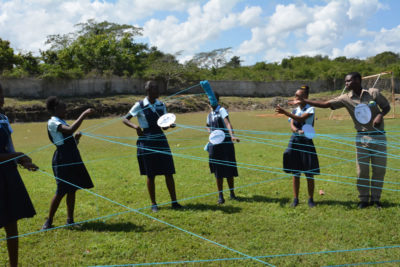
Student throwing the ball of yarn to another student.
Going through the same steps, the seagrass passed the yarn to the sea urchin, which then passed it to the lobster, to the snook, to the heron, and finally to the crocodile. I asked students, “Does anything eat the crocodile?“
A clever student responded, “Humans miss.”
I said, “Very good answer. Yes, humans do eat crocodiles. Are humans a part of the food web?”
In unison they answered, “Yes!”
Then I asked, “What did you just create?”
Several students replied, “A food chain!”
I coached, “Let’s continue to create another food chain. Since this one is finished, where does the food chain begin again?”
The students responded, “The sun!”
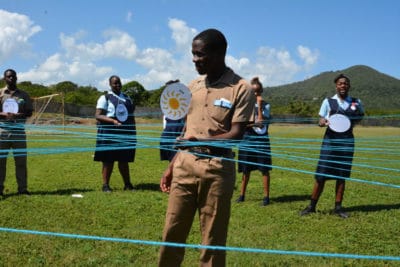
The sun getting tangled in the web surrounding him.
The students continued to pass the ball of yarn until each student was holding at least one piece of it. Then I asked them, “What did you create?”
They returned, “A food web!”
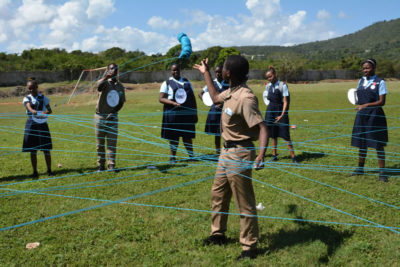
The food web is becoming more complex.
We continued to discuss different “what if” scenarios in relation to the food web. “What if we added an invasive species? What if we overfished snapper? What if an oil spill occurred?”
By the end of the activity, the students had a good idea of the interactions of the mangrove food web, how it can be disrupted, and the important role that humans play in it.
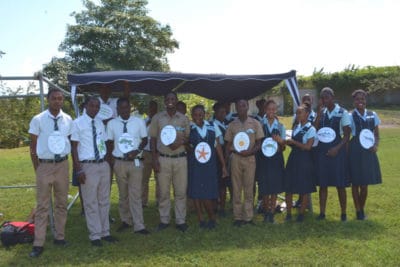
Holland High School students posing with organism cards.
Next month, we will conclude the J.A.M.I.N. project for the 2014-2015 school year. During this final phase, the students will plant the mangroves that they have been growing all year at the restoration site. At the same time, they will conduct a mangrove cleanup. Stay tuned for more news on the J.A.M.I.N. project. Until then, keep on J.A.M.I.N.!
Photos by Amy Heemsoth.
